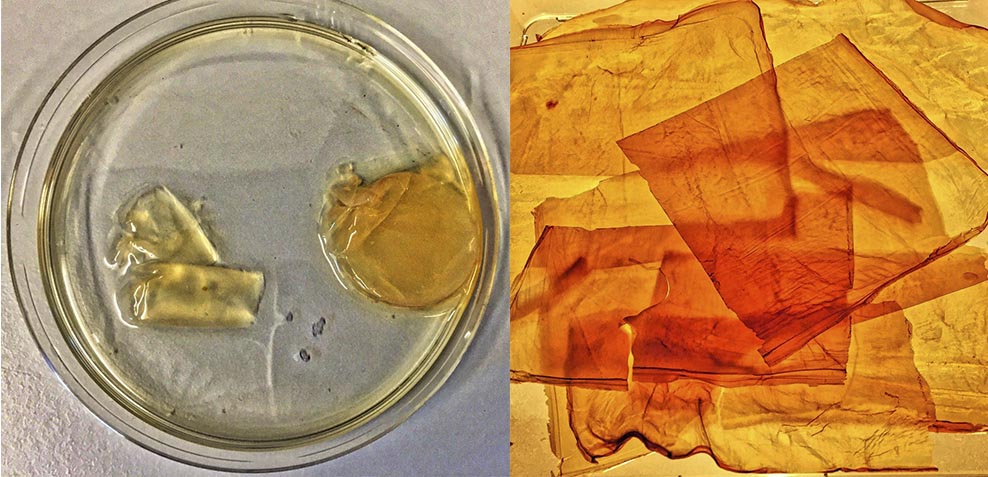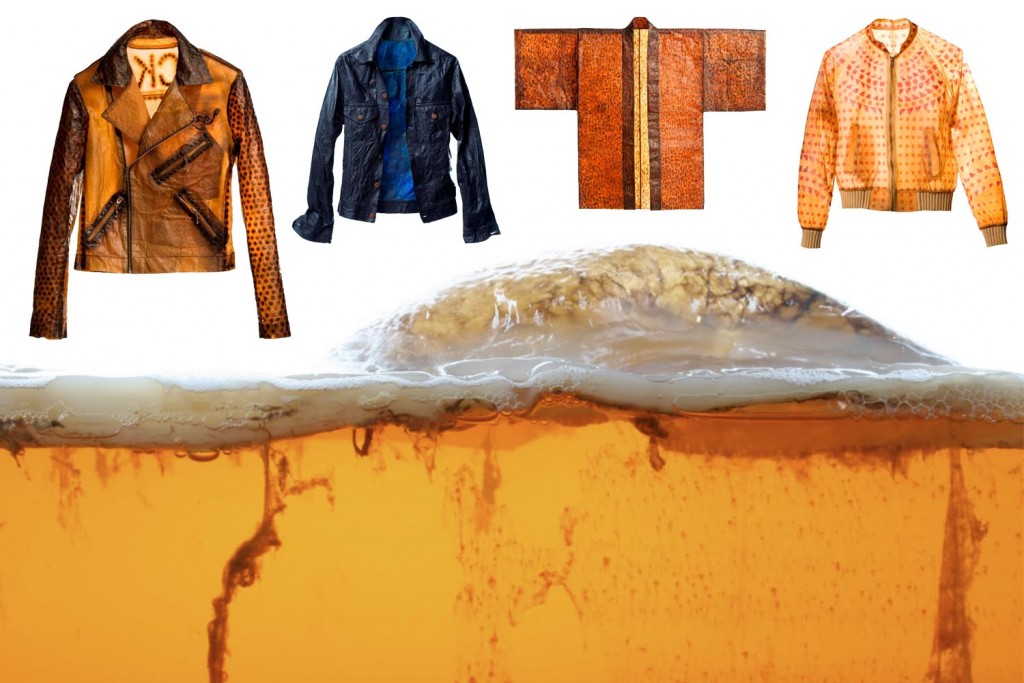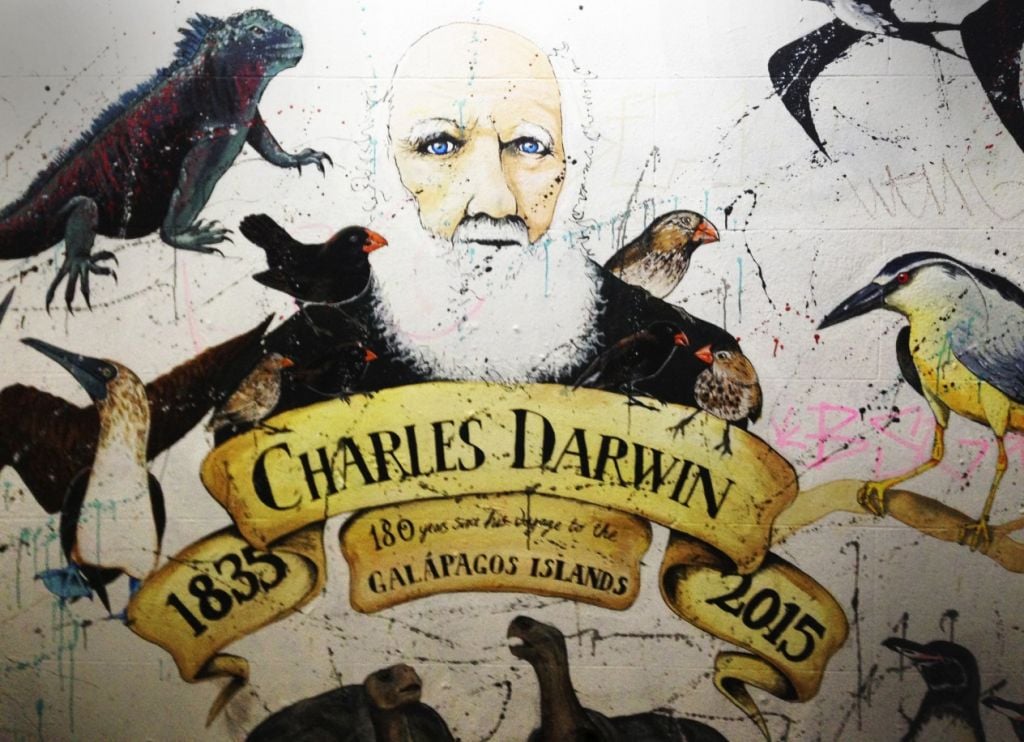Simon Park is a professor at the University of Surrey in the UK who created the first book to be ‘printed’ with living bacteria, whereas Suzanne Lee is a New York based designer who uses the same species of bacteria in her clothing designs.
This is probably one of the most unusual tributes to Charles Darwin, the English naturalist and geologist whose famous book was first printed in 1859. Simon told Wired the choice of Darwin was simple: “Origin of Species was a play on the fact that bacteria, or bacteria-like organisms, are the origin of the species.”
The bacteria used to print the book is a cellulose-producing species, which was manipulated by Park to create the cover of this unusual edition during over 10 days (8 days to print, 2 days to colour).

The current version was presented at the Edinburgh international science festival 2016 (well known for its Science-Art exploits). As Simon explains on his comprehensive blog, the material was dubbed ‘p-Paper’, to ‘reflect its bacterial (Prokaryotic life forms) origin and to differentiate from the more conventional e-Paper made from trees (Eukaryotic life forms)’.
Without [early bacteria-like organisms] we wouldn’t have the species we’re familiar with today.”
But what species were used to print this paper-based marvel? Well, the book shown in the picture is solely made of cellulose bacteria using GXCELL, a hyper cellulose producing variant of Gluconoactebacter xylinus.
Formerly known as Acetobacter xylinum, it is able to create glycan chains from pores into the growth medium. These ‘spin’ into microfibrils which are then held together to form a highly complex structure microbial cellulose ribbons.

Microbial cellulose can have a wide range of applications and potential roles in soft tissue replacement, artificial blood vessels, diet foods and of course high-strength paper.
Other artists to have experimented with G. xylinus include Suzanne Lee, who used the bacterial ‘pedicel’ produced to design clothes.

G. xylinus is also one of over 50 different kinds of microorganism currently used for art and design purposes. These are compiled in C-MOULD, the world’s largest microbe collection for use in the arts. As Suzanne Lee told Dezeen:
Microbes are the factories of the future”
For the page text and illustration of Simon’s book, bacterial ‘ink’ was created with additional species of bacteria which naturally produce pigments. Bacterial inks are a growing area of popularity amongst Bioartists and biohackers alike.
Other examples include a German design duo Blond & Bieber, which have used algae to create more ‘natural’ inks for fashion clothing. Then a SynBio startup, Pili (in Paris), has taken bacterial ink production to a potentially commercial stage.

It might be a little early to read the full book since so far only the first page has been created, but Simon is confident he’ll be able to create a longer version in the future.
Editor’s Note: We will explore a few more of Simon Park’s award-winning work and BioArt explorations in the coming weeks (there’s too many projects to cover in a single post!).
Here Suzanne Lee explains her BioCouture process to design bacteria-based clothes…
Feature Image Credit: A Graffiti Mural of Charles Darwin, the ‘Father of Evolution’ by unknown artist Dani and Claire came across in Bristol, UK (CC 3.0: Dani Bancroft)
Edited by Dani Bancroft (Section on Bacterial inks and Suzanne Lee)





